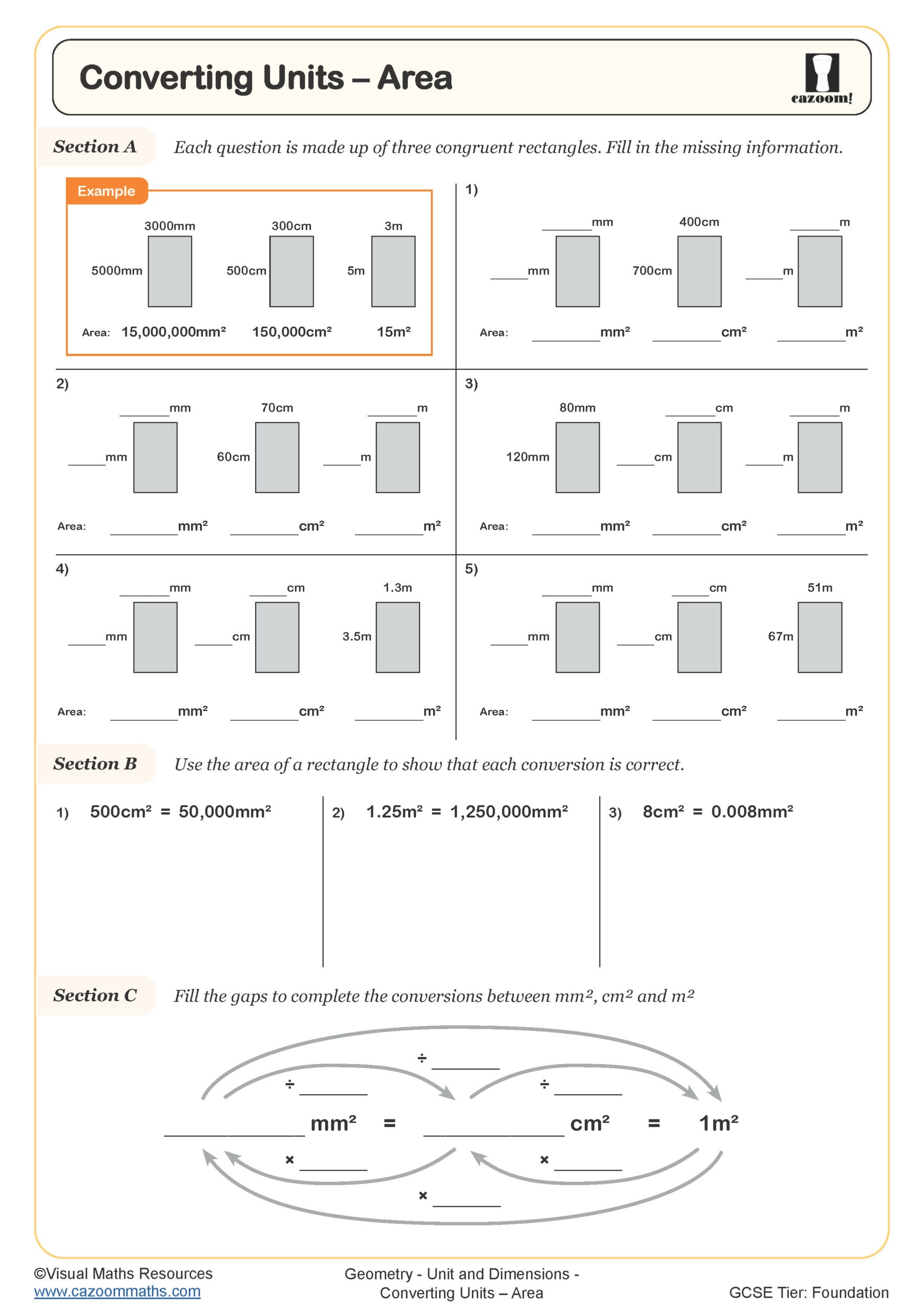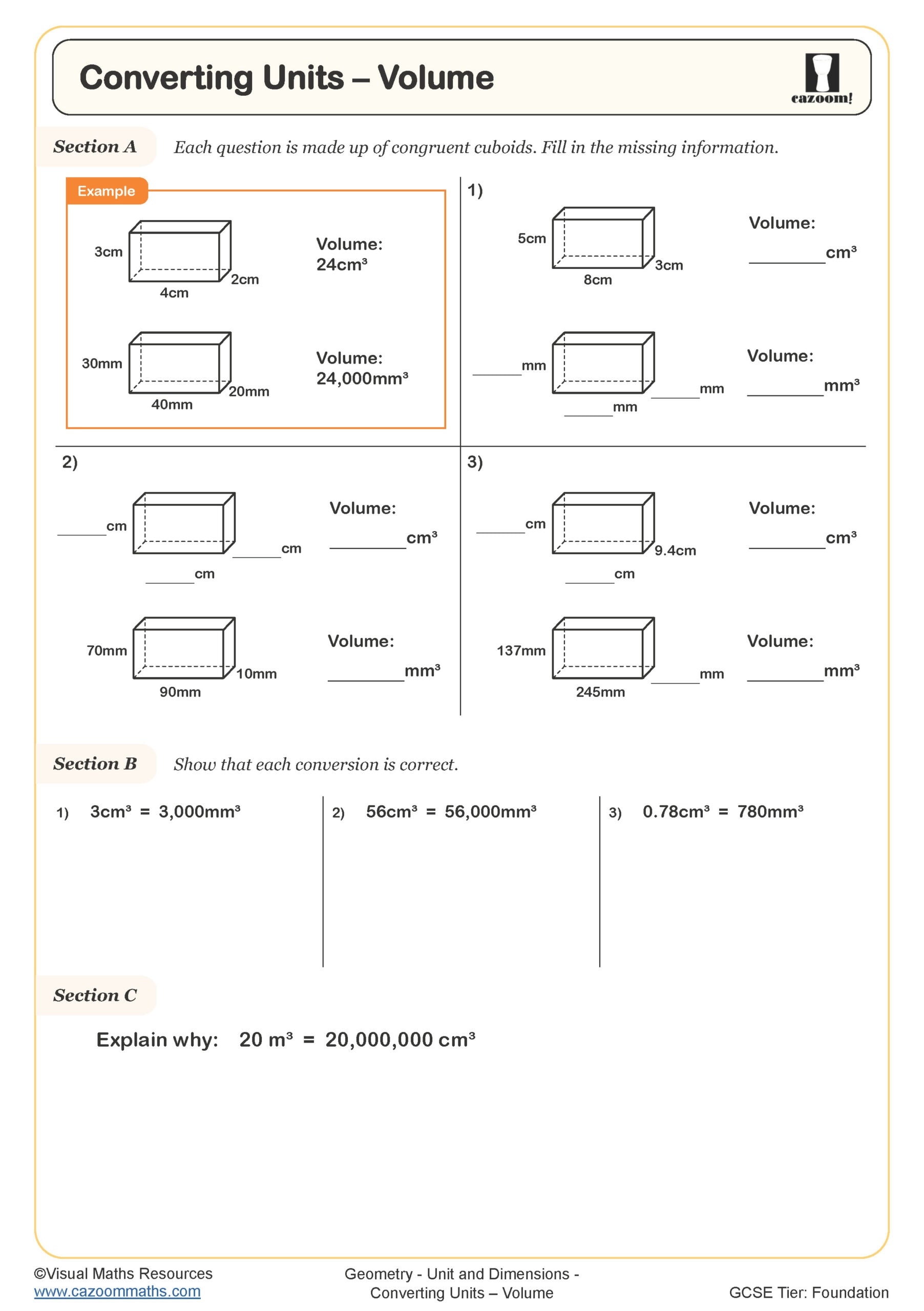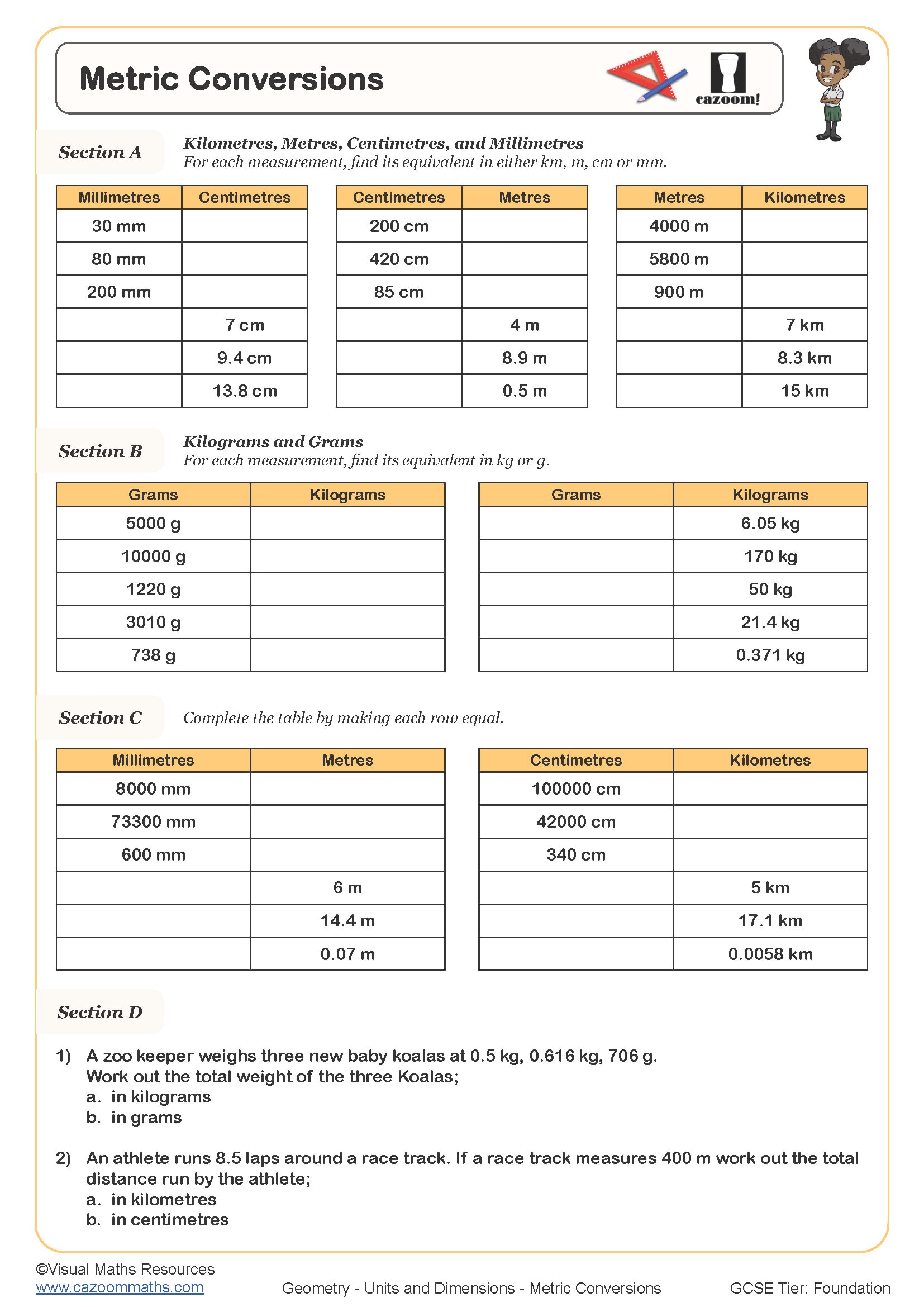Year 9 Units and Dimensions Worksheets
How Do Our PDF Year 9 Units and Dimensions Worksheets Bridge the Gap Between Primary and KS3?
Understanding units and dimensions forms a crucial bridge between simple conversions and the compound units students encounter at GCSE level. In Year 9, students start to analyse formulas dimensionally while verifying their work through unit checks and solving problems that need multiple conversion operations. Students who practice with structured worksheets on a regular basis will learn to identify metric prefix patterns, master scaling relationships and generate appropriate answers. The resources present increasing levels of difficulty, which enables teachers to detect student misunderstandings right away, especially when it comes to squared and cubed units, since students tend to make mistakes in these areas. The fundamental concepts in this work establish the basis for physics equations, chemistry calculations and engineering principles, which students will study in the near future.
Specific learning benefits include:
• Master metric and imperial conversions
• Develops dimensional analysis skills
• Strengthens proportional reasoning abilities
• Builds understanding of compound units
• Improves estimation and checking strategies
• Reinforces algebraic manipulation techniques
• Creates links between subjects
Core Maths Areas Strengthened by Cazoom Maths Year 9 Units and Dimensions Activities
The worksheets begin with simple measurement activities, followed by picture-based questions and end with abstract dimensional analysis to develop conceptual understanding before advancing to challenging problems. The resources contain worked examples that show students how to solve problems through step-by-step reasoning methods. The collection provides students with conversion methods, compound unit calculations and real-world examples that link academic concepts to everyday applications.
The worksheets in this collection include:
• Converting Metric Units — practises systematic conversion between kilometres, metres, and millimetres.
• Imperial to Metric Conversions — develops fluency with real-world measurement translations.
• Area and Volume Units — explores square and cubic unit relationships.
• Compound Units and Rates — introduces speed, density, and pressure calculations.
• Dimensional Analysis — builds formula manipulation and unit checking skills.
• Mixed Practice Problems — combines multiple concepts in contextual questions.
• Problem Solving with Units — applies knowledge to multi-step word problems.
Why Schools Choose Year 9 Units and Dimensions Worksheets for Easy Learning
Teachers find these worksheets useful because they present information in an organised way and arrange questions in a logical order, which helps students avoid mental confusion while keeping the tasks at an appropriate difficulty level. The structured format enables teachers to save planning time because it provides all necessary materials which support students with varying abilities in inclusive educational settings. The answer sheets help teachers mark the papers quickly and identify common mistakes, such as decimal point errors or incorrect conversion factors. The various question types, which include direct conversions and reverse problems that require backwards calculations, help students stay engaged while developing their ability to think flexibly. The resources demonstrate their effectiveness in connecting calculator-based activities to non-calculator work, as they help students understand when to use mental math and when to use written calculations for accuracy.
Applying Units and Dimensions Skills Beyond the Classroom: From Planning to Science
Mathematical fluency with units extends into countless daily decisions and professional fields. Students who master dimensional thinking gain practical problem-solving tools that remain valuable throughout life. For example-
• Calculating journey times and fuel consumption for travel planning
• Converting recipe measurements when cooking internationally
• Understanding energy bills and comparing utility tariffs
• Interpreting medical dosages and nutritional labels
• Planning DIY projects with accurate material estimates
• Analysing sports performance data and athletic records
• Programming games requiring physics simulations
• Pursuing careers in engineering, architecture, or scientific research


